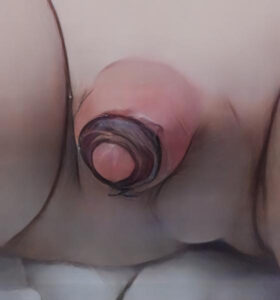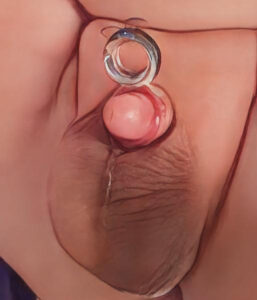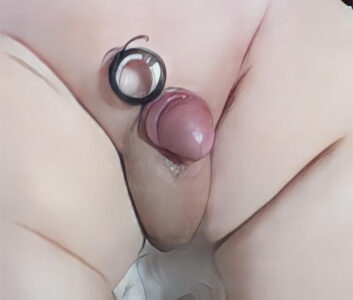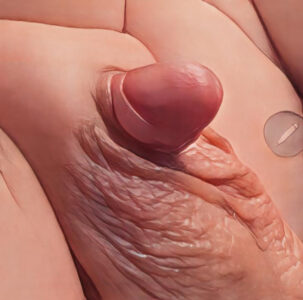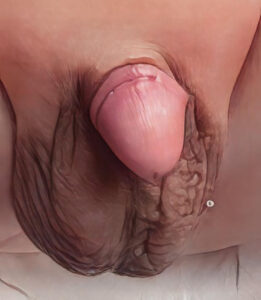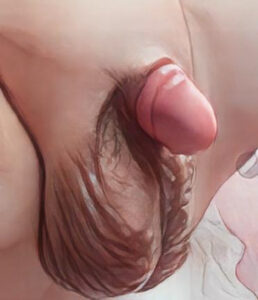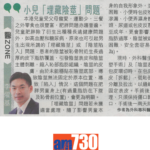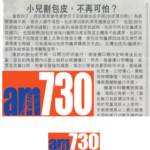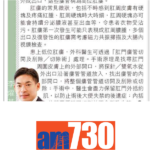
Circumcision
Circumcision is the surgery to remove a circular segment of foreskin. It is also called Bris, Brit Milah, Khitan, or Khatna in certain countries. Circumcision is indicated for national tradition, religious tradition, family tradition, phimosis, long prepuce, recurrent balanitis, recurrent posthitis, or other prepuce diseases. There are many different circumcisions. Please ask your doctor for advice.
Traditional Circumcision
After local or general anesthesia, the foreskin is stretched, clamped, and secured, and then cut away with scissors or a scalpel. Bleeding usually occurs and requires electrocautery or ligation of bleeding capillaries, and the wound requires surgical stitches. There will be a lot of exudate in the wound after surgery. The wound needs to be cleaned and cared for after urinating. Use saline, distilled water, or disinfectant to clean the wound. The wound is very painful, and you will need to take at least one to two weeks off after surgery before returning to office work or school.
Patients can do gentle exercise 4 to 6 weeks after surgery. If the wound heals well, patients can have sex about 4-6 weeks after surgery. Please ask your doctor for advice.
Baby Boys or Little Boys Plastibell Circumcision

[plastibell of different size]
Post Operation
Male Teenage or Adult ring circumcision

ring circumcision
Laser Circumcision
During laser circumcision surgery, a carbon dioxide laser is used to cut and burn the prepuce wound edge. The foreskin wound is sutured with surgical needles and surgical rapid glue (a sterile cyanoacrylate glue) is used to protect, strengthen, and cover the wound. This surgery can be performed under local anesthesia or general anesthesia in a clinic or hospital.
After laser cutting and burning the wound edge, the free nerve endings at the edge of the wound are covered with a very thin layer of burned tissue, so the pain sensation is much less compared with the cut wounds by scissors or scalpels.
Surgical rapid glue protects, strengthens, and covers wounds. The wound is relatively fixed during an erection, reducing the risk of wound dehiscence and bleeding. After surgery, patients do not need to clean the wound every time after passing urine. They just need to keep the wound clean and dry. The surgical rapid glue will fall off with dead skin within a few weeks after the surgery.
The advantages of laser circumcision are:
- There is less blood loss during the operation.
- There is no need to wash the wound after urination.
- The pain after the operation is mild.
- The wound is aesthetically pleasing.
Patients can go to school or work immediately after the operation. Patients can do mild exercise 2 to 3 weeks after surgery; if the wound heals well, patients can have sex about 4 weeks after surgery.
This new circumcision method has been used in thousands of patients and proven to be safe and effective. There is less than a 1% bleeding rate after laser circumcision, and the bleeding needs to be stopped. There is no need to clean the wound every day after surgery. Edema distal to the wound is rare. Please consult your doctor for advice.
Staple gun circumcision
FAQs
A. Repeated infection of the prepuce (posthitis) and repeated infection of the head of penis (balanitis) are common indications for circumcision. Please consult your doctor for advice.
A. You may have pain, itchiness, redness, skin cracks, skin ulcers, bleeding or pus discharge from the prepuce or head of penis. Experienced doctors can find out the cause(s) of the infection and cure the disease in one to two weeks. Why don’t you seek help from your doctor? Not receiving proper medical attention is unwise. Please consult your doctor for help.
A. Yes. Current circumcision is very safe.
A. 15-30 minutes before surgery, local anesthetic cream will be applied to the planned local anesthetic injection sites. When the local anesthetic cream starts working, the local anesthetic injection pain with a small needle will be minimized. The effect of the long-acting local anesthetic drug will last for 12 – 16 hours. Post operatively, the patient will take oral analgesics. Most patients can return to school or office in one to few days with minimal pain.
A. Our experienced surgeon and nurses will teach you how to take care of the wound. Most patients can take care of the wound by themselves.


